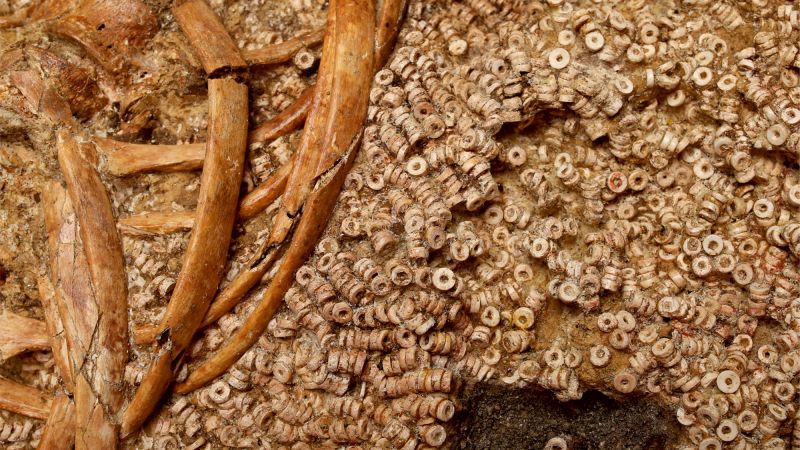Archaeological findings often provide a glimpse into past societies, offering invaluable insights into their cultural practices and social structures. In a groundbreaking discovery, researchers have unearthed a remarkable 5,000-year-old tomb located in southwestern Spain that dates back to the Copper Age. This grave, situated near Seville at the Valencina archaeological site, has revealed an extraordinary collection of white beads, which are believed to have been intricately crafted to form elaborate garments for the women buried there. The implications of these findings could transform our understanding of gender roles and social hierarchies in ancient communities.
The sheer quantity of beads found in the Montelirio grave is astonishing, with researchers estimating over 270,769 round beads primarily made from seashells. The effort involved in creating such a vast collection is staggering; it would have required the continuous work of ten individuals for approximately 206 days, which underscores not only the craftsmanship involved but also the societal organization necessary for such an undertaking. According to Leonardo García Sanjuán, a professor of prehistory at the University of Seville and lead author of the study, these beads were likely an essential part of ceremonial garments worn by women of high social or religious standing, distinguished by their elaborate appearance and the weight of materials.
Delving deeper into the nature of the artifacts, researchers noted that many of the beads maintained a shimmering iridescent quality due to the iridescence of the mother-of-pearl crust still present on some shells. This visual spectacle suggests that the garments made from these beads would have been strikingly eye-catching when illuminated by sunlight, enhancing the significance of women who presumably wore them during notable ceremonies and rituals. The study, published in the journal Science Advances, emphasizes the important societal positions these women held within their community.
The findings from the Montelirio tomb are particularly striking when considering the interment context. Within a sizable chamber that housed the remains of twenty individuals—fifteen women and five whose sex was undetermined—most of the beads were discovered. This specific arrangement hints at the potential for concentrated female influence during that time. The excavation process has unearthed beads for several years, yet this recent research represents the first comprehensive analysis of the entire collection, allowing for detailed insights into potential clothing designs, including full-body beaded tunics and skirts.
Furthermore, the study indicates that not only were the beaded garments a mark of status but that their production reflected a societal commitment to women’s roles and their reverence in death. Marta Díaz-Guardamino, an associate professor of archaeology at Durham University, highlighted how the beads’ arrangement suggested they formed clothing of considerable significance, necessitating both skilled craftsmanship and also extensive resources from the community.
This labor-intensive production mirrors the efforts required for constructing monumental structures like Stonehenge, which showcases the community’s social dynamics. The fact that such elaborate garments were accompanied into the afterlife indicates a high level of respect and social relevance accorded to women within this ancient society. García Sanjuán postulates that the society at Valencina may have been matriarchal, proposing to explore this idea further given its noteworthy implications for understanding the emergence of hierarchical structures in contemporaneous European societies.
These insights have sparked interest in the potentially egalitarian or matriarchal nature of this prehistoric community. Andrew Jones, a professor of archaeology at the University of Stockholm, recognizes the Montelirio site’s significance in understanding gender roles, noting both the equal treatment of men and women during the Neolithic and Copper Age, as well as the unique treatment of women in burial practices. As researchers continue to investigate the societal constructs of the Valencina community, the discoveries surrounding the Montelirio tomb will undoubtedly remain central, offering profound revelations about the complexity of social hierarchies and the valuation of women in ancient Spain.



